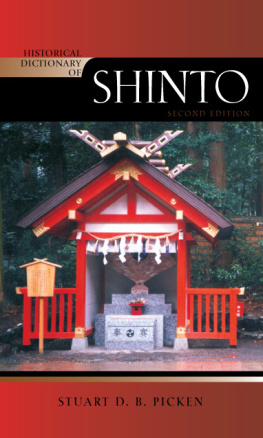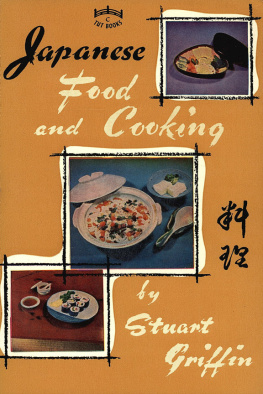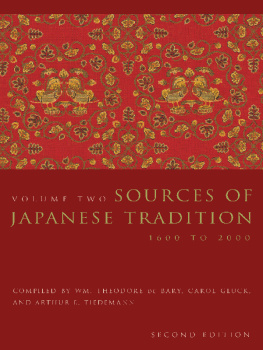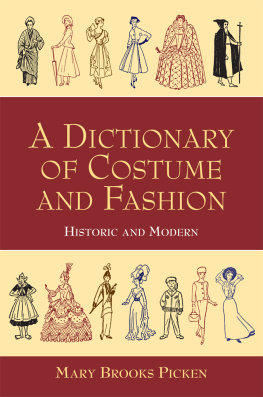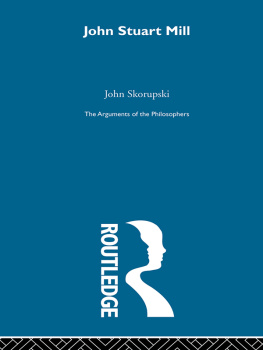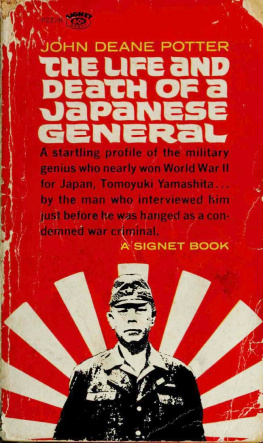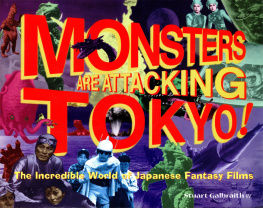Stuart D.B. Picken - Death in the Japanese Tradition
Here you can read online Stuart D.B. Picken - Death in the Japanese Tradition full text of the book (entire story) in english for free. Download pdf and epub, get meaning, cover and reviews about this ebook. year: 2016, genre: Religion. Description of the work, (preface) as well as reviews are available. Best literature library LitArk.com created for fans of good reading and offers a wide selection of genres:
Romance novel
Science fiction
Adventure
Detective
Science
History
Home and family
Prose
Art
Politics
Computer
Non-fiction
Religion
Business
Children
Humor
Choose a favorite category and find really read worthwhile books. Enjoy immersion in the world of imagination, feel the emotions of the characters or learn something new for yourself, make an fascinating discovery.

- Book:Death in the Japanese Tradition
- Author:
- Genre:
- Year:2016
- Rating:3 / 5
- Favourites:Add to favourites
- Your mark:
- 60
- 1
- 2
- 3
- 4
- 5
Death in the Japanese Tradition: summary, description and annotation
We offer to read an annotation, description, summary or preface (depends on what the author of the book "Death in the Japanese Tradition" wrote himself). If you haven't found the necessary information about the book — write in the comments, we will try to find it.
Death in the Japanese Tradition — read online for free the complete book (whole text) full work
Below is the text of the book, divided by pages. System saving the place of the last page read, allows you to conveniently read the book "Death in the Japanese Tradition" online for free, without having to search again every time where you left off. Put a bookmark, and you can go to the page where you finished reading at any time.
Font size:
Interval:
Bookmark:
Death in the Japanese Tradition
Where it all Started
I was on a research trip to Japan from October to November, 1970, under the kind auspices of Rotary International, when an event took place that stunned the nation. It left me with the feeling that in some sense it was a pivotal event that marked both an end and a beginning. I am referring to the dramatic suicide of Mishima Yukio (1925-1970), the world famous writer, on November 25. I was staying for a week in the New Otani Hotel in central Tokyo, that was not far from the scene of Mishimas last drama in which he was himself the principal actor.
The mental history of Mishima was complex, therefore I shall confine myself to his death, the circumstances surrounding it, and the impact it had on the nation. He lived a western style life on the one hand, but was extremely critical of Japans import of western culture. He was drawn by a romantic fascination to the twin values of patriotism and martial discipline. He founded a private army of around 80 disciples known as the Tate no Kai (The Society of the Shield) whose purpose was to protect the values vested in the Emperor System, the Tennosei from any threats, domestic or foreign. He appeared to believe that the prewar order could be reestablished.
After handing over the remaining part of his Sea of Fertility to his publisher, in the company of four members of his Society, he took control of the office of General Mashita of the ground Self-Defense Forces in Ichigaya, and gave a 10-minute address to the 1,000 SDF personnel who gathered on the parade ground. Having failed to draw any reaction to his appeal to abandon the postwar constitution, he returned to the Generals office, and committed seppuku in the traditional manner along with two of his colleagues. After cutting open his stomach, he was beheaded and in a bizarre ending, had his head and those of the two who died with him placed on the Generals desk.
The suicide of Mishima inspired a train of thought that led from Mishima to the idea of suicide in Japanese culture and to the wider issue of death itself.
By the time he had started his speech, the story was out in the public domain. Helicopters began whizzing around and police cars were appearing. Photographs of the three heads appeared in the newspapers as the shocked nation puzzled about his action. He had failed to persuade the SDF forces, and quickly appeared as an anachronism in a changing Japan. While his death was not the last extremist perpetrated in Japan, it was the last of the prewar variety. The suicide of Mishima inspired a train of thought that led from Mishima to the idea of suicide in Japanese culture and to the wider issue of death itself. Since language is the blueprint of thought, the study led into the language and the culture that makes Japan unique in this regard. Terms like seppuku and kaishaku to name but two, belonged to an unfamiliar world that I felt needed explanation and elucidation. Therefore, I would like now to look briefly at the relationship of language and culture in general and how this applies in the case of Japan. (For a general study of the life of Mishima, see: Henry Scott Stokes The Life and Death of Yukio Mishima, London: Owen, 1977)
Philosophically stated, this series, in its essence is a study in aspects of the complex interaction of language and culture, and it focuses specifically upon how cultural concepts, values and trends can be mirrored in the evolution and development of linguistic forms designed to express them. The research parameter is the history of these developments in Japan and the large terminology that surrounded images of death and suicide within the evolution of its civilisation. Before commencing on the study, it might be useful to reflect further on some of the ways in which the world of a culture can be unselfconsciously set forth in its language.
Language and Culture
There are many ways in which the relationship between language and culture can be characterised. It has been argued by some scholars that culture is responsible for the shape and formation of language. Different schools of thought favor the reverse, namely that language in some sense creates culture. While this is a linguistic, cultural, anthropological and philosophical problem in its own right, this study was inspired by one intriguing aspect of the relationship between language and culture This relationship is suggested in the creation of vocabulary to express distinctive or even definitive concepts with a culture. The physical environment may be an important causal factor. For example, a mountainous terrain with windswept hills may evolve a wide vocabulary that describes different types of rain and showers. A sea-going culture may of necessity develop a range of terms to describe the different moods of the sea. Scotland has traditionally over 80 ways to describe how snow falls. Classical Chinese has over 100 terms for family relations.
Anxiety in the Modern Western World
The inverse of this view may be formulated in the seemingly simple question: what does vocabulary expansion and development tell us about the evolution of a culture? Joseph LeDoux, a neuroscientist, in Anxious: The Modern Mind in the Age of Anxiety (London: Oneworld Publications, 2015), deals with the human problem of anxiety. I was interested in his observation that the English language has no fewer than 37 synonyms or other terms that describe fear or anxiety. These exist without reference to the older discussion of anxiety in the work of Sren Kierkegaard (1813-1855) the 19th-century Danish philosopher/theologian whose suggestive and related titles include Fear and Trembling (1843), The Concept of Anxiety (1844) and the Sickness Unto Death (1849). The fact that 37 terms related to anxiety exist does suggest something of the nature of modern western culture as preoccupied with anxiety in one form or another. Whatever else the relationship may be between language and culture, it seems at least clear that the evolution of a culture and its behavioral forms brings with it relevant terms and forms of language with which to express its social experience.
The western world produced the study of psychiatry, particularly after the end of World War I in 1918 when the many types of trauma returning from the battlefronts came to be recognised, studied, and analysed by thinkers such as Karl Jaspers (1883-1969), Sigmund Freud (1856-1939) and Carl Jung (1875-1961). While the links may not always be apparent, Jaspers, for example, was profoundly influenced by Kierkegaard, a fact that indicates that the awareness and study of the inner self long precedes the epic drama of World War I. The concept of anxiety in western civilisation has older roots, which within the last two centuries have come to be a defining mark of the evolution of cultural life. The extensive use of practicing psychiatrists in the United States alone is witness to the fact.
The Terminology of Death and Suicide in Japan
If anxiety is a key term in the self-awareness of modern western civilisation, it occurred to me that similar phenomena might exist in Japan with terminology gathered around different themes. Far from the European experience and over many years, my study of Japanese culture led me to be struck by how many synonyms Japanese had for the term suicide. Many of these are no longer in use and can be considered obsolete because of cultural transformation. However, a culture that evolved such a unique vocabulary must also have developed unique perceptions of death and the values surrounding it. While modern Japan cannot be called a suicide culture in the same way it might be over the preceding thousand years, it is arguable that the concept or ideal lingers in some aspects of the world of the present.
Death may seem a morbid topic for reflection in relation to what appears to be a highly life-oriented and dynamic civilisation. However, in the case of Japan, the changes in popular perspectives on death can provide uniquely interesting insights into the evolution of Japanese civilisation itself. From the earliest stages in the awareness of death, in the minds of the ancient Japanese, it is quite fascinating to observe how its image at different periods has exerted a continuing influence on social development, even to the present. It could also be argued that these changes marked cultural paradigm shifts from one era to another. The religious tradition of Japan has exerted enormous influence on the development of the culture but in a manner radically different from the way which religion has and still exerts a highly personal influence in the west. Japanese religions relate less to personal beliefs than they represent features of social identity. This characteristic goes back to the roots of the agrarian society that emerged around the cultivation and subsequently the entire culture of rice that came to be definitive of Japanese civilisation. The emergence of what is now identified as the Shinto tradition has its roots here. While it has been argued by some scholars that Shinto and its traditions have some mainland East Asia origins, the phylogenetic analysis of its genealogical development should be distinguished from the ontogenetic study of its evolutionary development as it grew from and became a major influence on the Japanese view of the world, including the meaning of life and death.
Next pageFont size:
Interval:
Bookmark:
Similar books «Death in the Japanese Tradition»
Look at similar books to Death in the Japanese Tradition. We have selected literature similar in name and meaning in the hope of providing readers with more options to find new, interesting, not yet read works.
Discussion, reviews of the book Death in the Japanese Tradition and just readers' own opinions. Leave your comments, write what you think about the work, its meaning or the main characters. Specify what exactly you liked and what you didn't like, and why you think so.

